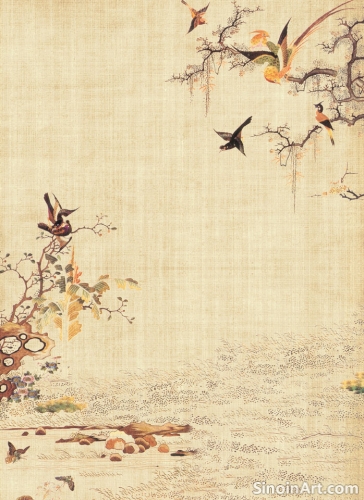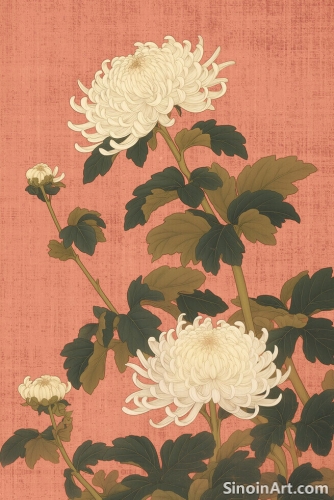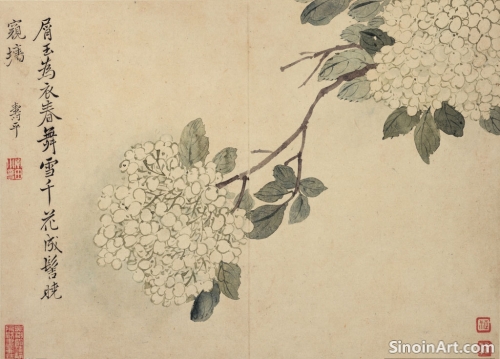Gongbi Painting and the Depiction of Auspicious Symbols
|
Gongbi painting is frequently used to depict auspicious symbols and motifs, reflecting the Chinese cultural emphasis on good fortune, prosperity, and happiness. These symbols, drawn from mythology, nature, and folklore, are often carefully woven into the compositions, imbuing the artwork with layers of cultural meaning and symbolic significance. The use of symbols is often a form of good will, and an expression of personal hopes for the future.  The use of symbolic elements in Gongbi painting goes beyond mere decoration; it is a way to communicate complex ideas and aspirations. Each symbol carries a specific meaning, often related to luck, wealth, longevity, or happiness. The artist often will use a combination of these symbols to create a complex message.  Common auspicious symbols include the peony, representing wealth and prosperity; the crane, symbolizing longevity and wisdom; the bat, representing happiness; and the peach, symbolizing immortality. Each symbol has a specific meaning that the artist uses to communicate their hopes and beliefs.  The meticulous detail of Gongbi is well-suited to the accurate rendering of these symbols, often enhancing their visual impact and cultural significance. The precision of the techniques is often used to give weight and authority to these commonly used symbols. The color choices in the depiction of auspicious symbols also often carry specific symbolic meanings. For example, red is associated with luck and happiness, while gold is associated with wealth and prosperity. The colors used often reinforce the symbolic messages being conveyed in the painting. Ultimately, the depiction of auspicious symbols in Gongbi painting serves not only to enhance the visual beauty of the artwork, but also to convey cultural values and express wishes for good fortune. These paintings become both works of art and cultural expressions that are intended to pass down blessings and good fortune. |
Tag : Auspicious symbols, Chinese art symbols, good fortune art, symbolic motifs, lucky paintings
Related information
- The Use of White Space in Gongbi Composition
- Gongbi and the Use of Stippling and Pointillism Techniques
- The Symbolism of Gongbi: Decoding the Language of the Brush
- Gongbi Painting and the Depiction of Clouds and Mist
- The Legacy of Gongbi: Ancient Roots and Modern Blossoming
This article explores the importance of white space in Gongbi composition, highlighting its role in defining the main subject, creating depth, contributing to overall balance, and reflecting the philosophical principles of emptiness and the interplay of yin and yang.
This article explores the use of stippling and pointillism techniques in Gongbi painting, highlighting how the careful application of dots or points of color creates unique textures, visual effects, and expands the range of expression within this traditional art form.
This article explores the symbolic elements found in Gongbi paintings, focusing on the meanings behind flowers, animals, colors, and compositions within the Chinese artistic tradition.
This article explores the depiction of clouds and mist in Gongbi painting, highlighting the techniques used to create a sense of depth, luminosity, and atmosphere, and how the subtle variations in color and tone evoke a sense of mystery and serenity.
This article explores the history and legacy of Gongbi painting, from its origins in the Tang Dynasty to its evolution through the Song and subsequent dynasties, and its current resurgence in contemporary art.